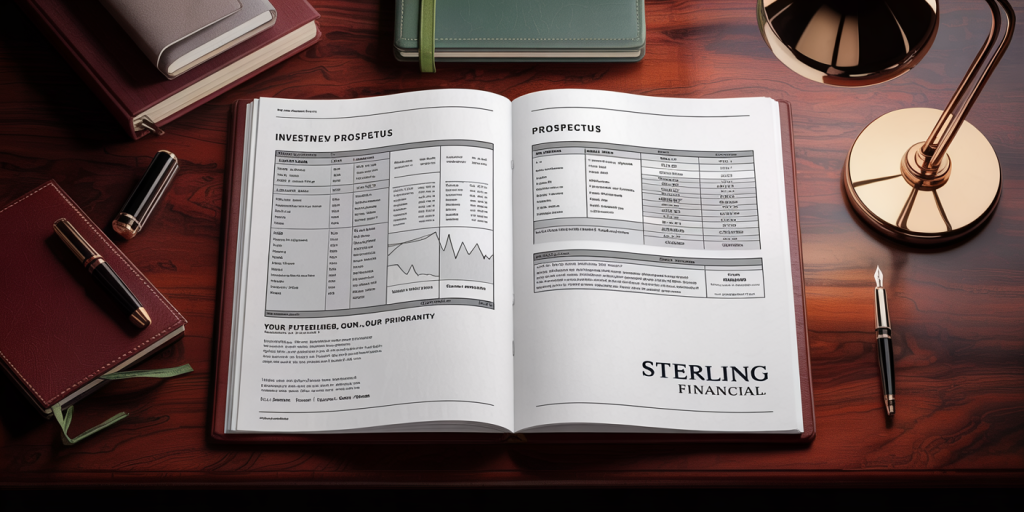Navigating the world of investments can be daunting, especially when you’re handed a stack of complex documents like an investment prospectus. These documents are packed with vital information about the financial offering, but their technical jargon and voluminous data can easily overwhelm even seasoned investors. Understanding how to read an investment prospectus properly is crucial for making informed decisions and avoiding pitfalls.
Investment prospectuses serve as the primary disclosure documents provided by companies when they offer securities to the public. According to the SEC, they include detailed information about the company’s financial health, risks, management, business model, and the securities being issued. In 2022 alone, over 1,200 initial public offerings (IPOs) were filed in the United States, highlighting how common and essential understanding prospectuses is for investors (Renaissance Capital, 2023). This article will guide you through the key sections of an investment prospectus, illustrating how to dissect each part methodically to reduce confusion and increase investment confidence.

—
Understanding the Role and Structure of a Prospectus
Before diving into details, it’s important to grasp the main purpose of an investment prospectus. Essentially, it is a legal document designed to provide transparency and protect investors by disclosing all material facts about the securities being offered. Its structure is typically standardized to ensure consistency and comparability.
A prospectus usually begins with a summary, often called the “Prospectus Summary,” which offers a high-level overview of the company, the securities being offered, and the use of proceeds. This section acts as a roadmap and should be your starting point. For example, consider Airbnb’s IPO prospectus from 2020: its summary highlighted the company’s rapid growth in gross booking value and its strategy to increase host supply, setting expectations for prospective investors. By analyzing this portion first, you can quickly gauge whether the company’s vision aligns with your investment goals.
—
Decoding Financial Statements: What Numbers Tell You
One of the most intimidating parts of any prospectus is the financial statements section. Here, the company presents balance sheets, income statements, and cash flow statements, often over multiple years. While the numbers may seem overwhelming, understanding their core messages is indispensable.
Start by focusing on profitability, liquidity, and solvency metrics. Profit margins and net income figures inform you whether the company is generating sustainable profits. Liquidity ratios like current ratios explain the company’s ability to meet short-term liabilities. Solvency is key to understanding long-term viability, often assessed through debt-to-equity ratios.

For instance, Tesla’s 2010 IPO prospectus showed significant losses but a growing asset base and cash reserves. Careful investors noted the company’s cash burn rate alongside its industry potential, which later proved to be a successful bet. In contrast, investing in companies with high debt and weak cash flow often signals red flags.
| Financial Metric | What It Indicates | Example (Tesla 2010) |
|---|---|---|
| Profit Margin | Profitability of core business | Negative initially |
| Current Ratio | Short-term liquidity | Relatively healthy (1.5) |
| Debt-to-Equity Ratio | Long-term solvency and risk | High but manageable |
Identifying these key numbers can save you from misreading complex tables and jargon.
—
Assessing Risks and Disclosures: The Fine Print That Matters
Every investment comes with risks, and the prospectus dedicates a substantial section to laying them out candidly — this is often termed “Risk Factors.” Unlike marketing materials, companies tend to disclose worst-case scenarios here, and ignoring this section can be dangerous.
Risk disclosures commonly include market risks, regulatory changes, operational risks, and financial risks. For instance, WeWork’s failed IPO in 2019 was partly attributed to extensive risk warnings in their prospectus regarding governance issues, dependency on short-term leases, and liquidity problems, which raised red flags for investors.
It’s useful to compare these risks across similar companies before investing. A high-risk biotech firm may have far more uncertainties, such as clinical trial failures, than a tech company with steady revenue streams. Understanding the nature and extent of risk helps tailor your portfolio to your risk tolerance.
—
Evaluating Management and Corporate Governance
A company’s leadership greatly influences its performance and risk profile. The prospectus includes detailed biographies of executive officers and board members, outlining their experience and prior roles. Evaluating management quality can illuminate the company’s strategic direction and stability.
For example, Amazon’s prospectus during its 1997 IPO emphasized Jeff Bezos’ vision and leadership background, which convinced investors of long-term potential despite short-term unprofitability. Similarly, poor governance or lack of experienced leadership has been linked to disastrous outcomes, as seen in Theranos’ failed offering.
Look for details about ownership structure, potential conflicts of interest, and the composition of the board. Transparent, experienced leadership with aligned interests is usually a positive sign, whereas opaque structures may warrant caution.
—
Understanding Offering Details and Use of Proceeds
One of the most practical elements of a prospectus is the explanation of what the company intends to do with the funds raised. The “Use of Proceeds” section details whether the company plans to invest in expansion, pay down debt, acquire assets, or simply improve liquidity.
For instance, Zoom’s 2019 prospectus stated that proceeds would be used to enhance product development and sales capacity, indicating a growth-focused strategy. This transparency helps investors forecast how their capital might contribute to value creation.
Also examine the type of securities offered — common stock, preferred stock, bonds, or convertible securities. These have differing rights and risks. Bonds typically offer fixed returns but less upside, while common stockholders benefit from capital appreciation but assume more risk.
| Security Type | Characteristics | Investor Considerations |
|---|---|---|
| Common Stock | Ownership stake, voting rights | High risk, high potential reward |
| Preferred Stock | Fixed dividends, priority payout | More stable income, less volatility |
| Corporate Bonds | Debt instruments, fixed interest | Lower risk, predictable returns |
Studying these aspects clarifies what you’re actually buying and helps align the investment with your financial objectives.

—
Looking Ahead: The Future of Prospectuses and Investor Transparency
The environment for investment disclosures is evolving rapidly. Regulators worldwide are pushing for more accessible and digital-friendly prospectuses. The U.S. SEC’s 2023 amendments aimed at incorporating plain language summaries and interactive data tools reflect this trend toward enhancing investor comprehension.
Emerging technologies such as AI-powered analysis and visualization tools promise to simplify prospectus review. Startups like AlphaSheets offer platforms that auto-extract key financial data and risks, turning dense filings into digestible insights. Additionally, blockchain technology is being explored for secure, real-time prospectus updates.
As these innovations mature, future investors may need less time deciphering dense documents and more time strategizing actual investments. However, despite digital aids, fundamental skills in interpreting financial metrics, risk disclosures, and management quality will remain indispensable.
—
Learning how to read an investment prospectus effectively can significantly improve your confidence and decision-making in the financial markets. By breaking down each section—overview, financials, risks, leadership, and offering details—you can sift through the complexity and identify the factors that truly matter. Coupling this knowledge with emerging tools and regulatory improvements, the future holds promise for a more transparent and investor-friendly landscape. Whether you’re a novice or an experienced investor, mastering the art of prospectus reading is a critical step on your path to financial success.

Deixe um comentário